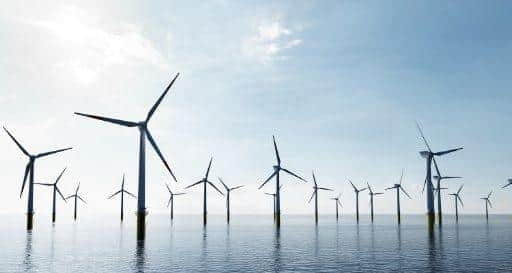Partner sought for £1 billion-plus Scottish floating wind farm project
Spanish-Japanese renewable energy group Univergy International is looking to develop the project - named Scotia Ventus - off the north-east coast.
The group has estimated the development phase of the project will cost around £28 million and will take place over the next four years.
Advertisement
Hide AdAdvertisement
Hide AdA two-year construction place could start in 2026 ahead of generation getting underway in 2028.


Univergy, which started working on the project in 2018, said it has confirmation from Scottish and Southern Electricity Networks that there is capacity to connect at least 500 megawatts of generating power at its preferred location for the project.
Ignacio Blanco, executive president and chief executive of the Univergy division overseeing the project, said the firm was now looking for a partner to contribute “financial expertise” for the development.
“Univergy will collaborate with potential project partners by providing all necessary due diligence and technical and cost-effective studies, with the aim of facilitating negotiation in search of an application based on financial leasing with or without a purchase option,” he said.
Univergy launched in 2012 and has joint headquarters, in Tokyo and Madrid. It operates projects across Europe, South America and Asia.
The search for a partner for the project comes amid significant levels of activity around offshore wind in Scotland.
Major names including BP are currently preparing bids under the Crown Estate Scotland’s ScotWind offshore wind leasing round.
Option fees will be paid by successful applicants n exchange for securing the rights to areas of seabed that have been identified as suitable for development in by Marine Scotland. A total of 8,600 square kilometres of Scottish seabed is potentially available for development. Funds raised by the ScotWind leasing process will be returned to the Scottish Government for public spending to drive the green recovery and help deliver government priorities.
The deadline for applications under ScotWind is July 16.
Advertisement
Hide AdAdvertisement
Hide AdScotland is already playing a leading role in the development of floating offshore wind.
The world’s first floating wind farm, the 30 MW Hywind Scotland pilot park, has been producing since 2017, demonstrating the feasibility of floating wind farms that could be ten times larger. The farm consists of five 6 MW turbines, providing enough electricity to power the equivalent of around 36,000 households.
The world’s largest offshore wind farm, Dogger Bank, is currently being built in the North Sea more than 130km off the north east coast of England.
A joint venture between SSE Renewables, Equinor and Eni, it will have up to 200 turbines when it is fully complete in 2026, capable of powering six million homes.
In December, SSE has entered into an agreement to sell a 10 per cent stake in the first two phases of Dogger Bank Wind Farm to Eni for around £200m.
It said divesting the stake is in line with SSE’s stated intention to partner to capitalise on its significant growth opportunities related to net zero.
A message from the Editor:Thank you for reading this article. We’re more reliant on your support than ever as the shift in consumer habits brought about by coronavirus impacts our advertisers. If you haven’t already, please consider supporting our trusted, fact-checked journalism by taking out a digital subscription: www.scotsman.com/subscriptions
Comments
Want to join the conversation? Please or to comment on this article.